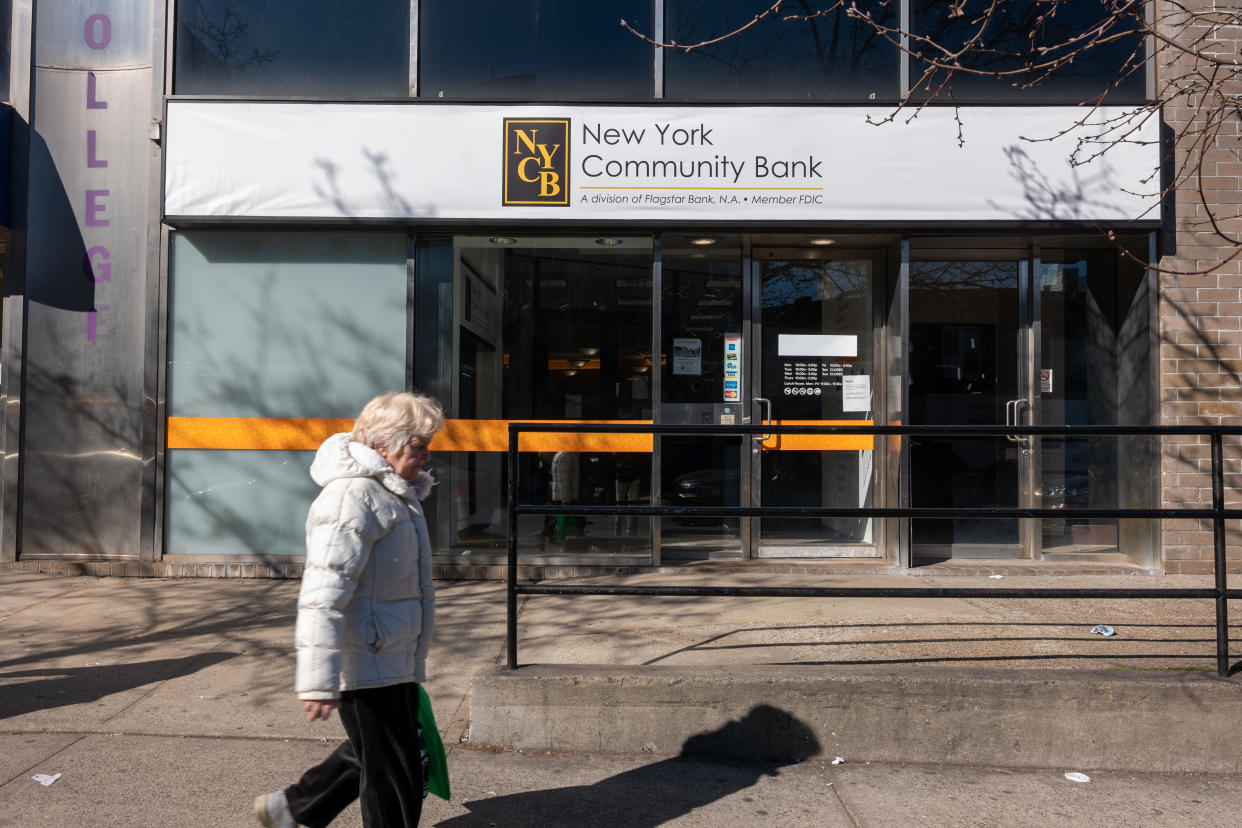Bank deposits are back above pre-SVB levels. Regional lenders still have problems.
Banks have now regained all deposits they lost following the collapse of Silicon Valley Bank. But that doesn't solve many of the problems still faced by regional lenders.
The amount of deposits held by all US banks hit $17.56 trillion during the week ending March 20, according to the latest Federal Reserve data, exceeding pre-SVB levels for the first time since the California regional lender was seized on March 10, 2023.
Customers yanked lots of money from their accounts during the chaos of last spring as they sought safety and higher yields outside the banking system, sending industry deposits to a low of $17.23 trillion in late April. Banks have now clawed $337 billion back.
"We're in a good place with deposits, particularly as we lap last year’s turmoil," said Scott Siefers, a Piper Sandler bank analyst.
To be sure, all banks still have a ways to go to get back deposits they also lost in 2022 as the Federal Reserve began cutting interest rates to cool inflation. Bank deposits are still down more than $600 billion from their peak in April 2022.
The high cost of funding
The big problem for regional banks is that many of the deposits they did get back over the last year have come at a steep cost.
That consequence will be visible again in the coming weeks as many regional banks report their first quarter earnings and discuss challenges with profit margins and lending.
Simply put, smaller banks got their SVB-era deposits back by paying a lot more for them. But that cut into a key profit measure — known as their net interest margin — that smaller banks can’t afford to shrink.
That’s because midsize banks rely heavily on the spread they earn between loans and deposits, while bigger national institutions like JPMorgan Chase (JPM) and Bank of America (BAC) can lean on other revenue sources — such as wealth management, trading, and investment banking.
The more the smaller banks pay for deposits, the tighter that critical margin gets.
They theoretically might be able to make more from issuing new loans at higher rates, but lending growth has fallen since the problems of March 2023 and hasn’t recovered like deposits have.
In fact, lending is now growing at its slowest rate since the early part of the COVID-19 pandemic, according to the latest Fed data.
"If there is a theme for the first quarter that's negative, unfortunately, it's loan growth," Sieffers said.
The biggest banks in the US don’t face the same pressures. They have gotten much of their deposits back from last spring but they don’t need to pay as much to attract them due to the banks’ size and perceived safety.
In fact, the country’s four largest banks pay less than half of the interest the rest of the US banking industry pays on certificates of deposits (CDs) and just a fraction of what the industry pays customers with interest-bearing savings accounts, according to data compiled by Apollo. (Disclosure: Apollo Global Management is the parent company of Yahoo Finance.)
There are some signs that deposit costs are coming down or holding steady at other institutions. The average one-year CD rate offered by US banks peaked at 2.08% in October of last year and has since declined slightly to 1.98%, according to Bankrate.
But "individual banks can still buck that trend," Bankrate's chief financial analyst, Greg McBride, told Yahoo Finance.
One smaller regional bank that does appear to be paying high rates to lock in critical funding is New York Community Bancorp (NYCB), according to Wedbush Securities managing director David Chiaverini.
NYCB has "raised their deposit rates to being amongst the most competitive in the banking industry," Chiaverini said.
As of Wednesday, the bank's website was advertising seven-month CD rates up to 5.50% for select locations.

Starting in late January, NYCB unleashed a series of bad surprises on investors that included a tenfold increase in its fourth quarter loss and a disclosure of weaknesses in its internal controls.
NYCB is one of the largest lenders to multifamily properties, especially rent-controlled apartment complexes in New York City, and its struggles have raised wider concerns about the exposure smaller banks have to commercial real estate weaknesses.
Its stock price has plunged, and it took an infusion of $1 billion from an investor group led by former Treasury Secretary Steve Mnuchin to calm investors.
On March 7, NYCB disclosed that it lost 7% of its deposits in one month. One NYCB official, Alessandro DiNello, told analysts the same day that "we didn't do anything crazy" or offer 6% CDs "to make the numbers look good."
NYCB declined to comment.
"Given all the turmoil they've gone through, it’s not surprising they had to raise CD rates," Chiaverini said. "We'll have to see the impact that will have on their net interest margins."
David Hollerith is a senior reporter for Yahoo Finance covering banking, crypto, and other areas in finance.
Click here for in-depth analysis of the latest stock market news and events moving stock prices.
Read the latest financial and business news from Yahoo Finance
